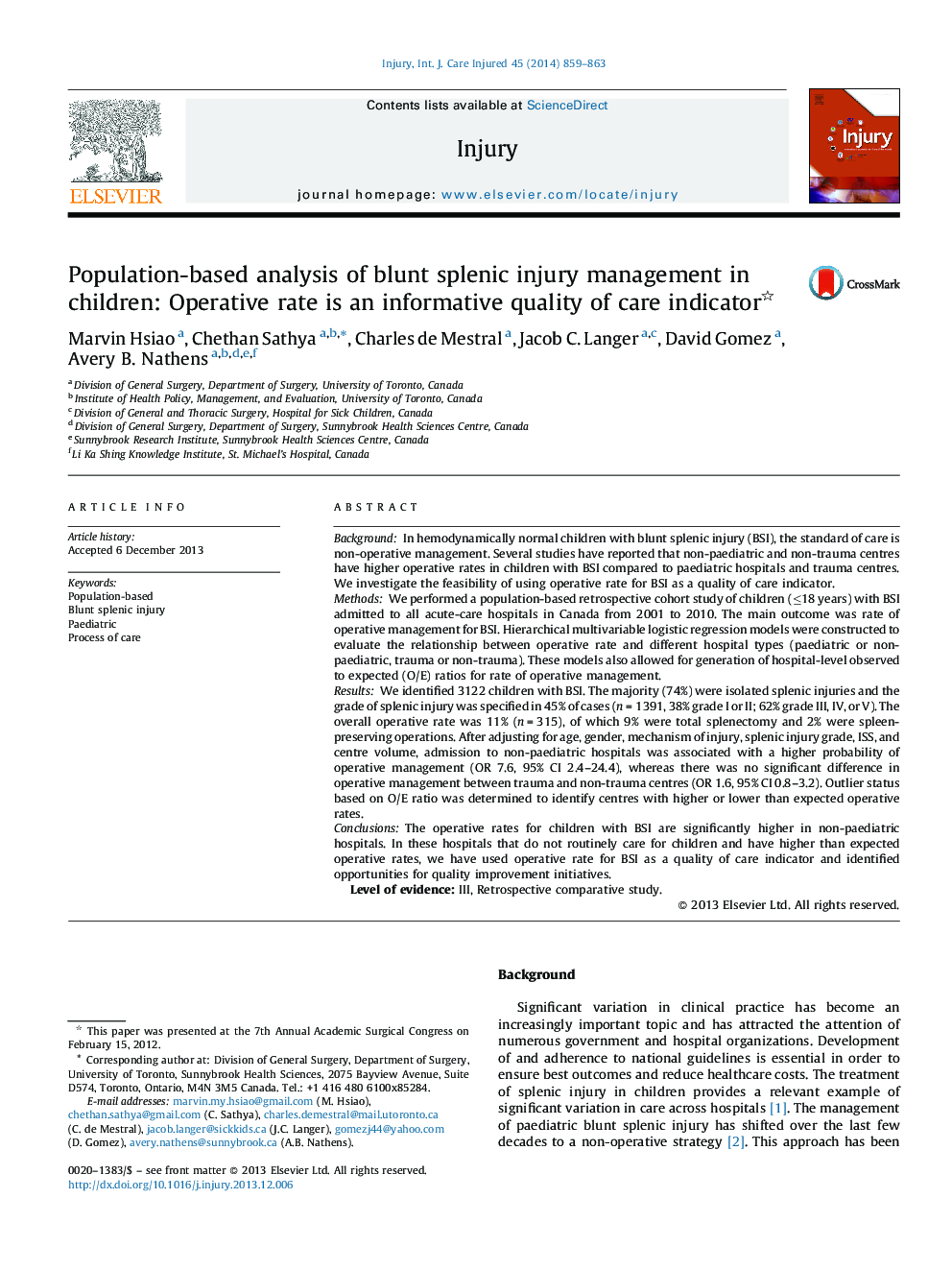| کد مقاله | کد نشریه | سال انتشار | مقاله انگلیسی | نسخه تمام متن |
|---|---|---|---|---|
| 3239619 | 1206014 | 2014 | 5 صفحه PDF | دانلود رایگان |
BackgroundIn hemodynamically normal children with blunt splenic injury (BSI), the standard of care is non-operative management. Several studies have reported that non-paediatric and non-trauma centres have higher operative rates in children with BSI compared to paediatric hospitals and trauma centres. We investigate the feasibility of using operative rate for BSI as a quality of care indicator.MethodsWe performed a population-based retrospective cohort study of children (≤18 years) with BSI admitted to all acute-care hospitals in Canada from 2001 to 2010. The main outcome was rate of operative management for BSI. Hierarchical multivariable logistic regression models were constructed to evaluate the relationship between operative rate and different hospital types (paediatric or non-paediatric, trauma or non-trauma). These models also allowed for generation of hospital-level observed to expected (O/E) ratios for rate of operative management.ResultsWe identified 3122 children with BSI. The majority (74%) were isolated splenic injuries and the grade of splenic injury was specified in 45% of cases (n = 1391, 38% grade I or II; 62% grade III, IV, or V). The overall operative rate was 11% (n = 315), of which 9% were total splenectomy and 2% were spleen-preserving operations. After adjusting for age, gender, mechanism of injury, splenic injury grade, ISS, and centre volume, admission to non-paediatric hospitals was associated with a higher probability of operative management (OR 7.6, 95% CI 2.4–24.4), whereas there was no significant difference in operative management between trauma and non-trauma centres (OR 1.6, 95% CI 0.8–3.2). Outlier status based on O/E ratio was determined to identify centres with higher or lower than expected operative rates.ConclusionsThe operative rates for children with BSI are significantly higher in non-paediatric hospitals. In these hospitals that do not routinely care for children and have higher than expected operative rates, we have used operative rate for BSI as a quality of care indicator and identified opportunities for quality improvement initiatives.Level of evidence: III, Retrospective comparative study.
Journal: Injury - Volume 45, Issue 5, May 2014, Pages 859–863
